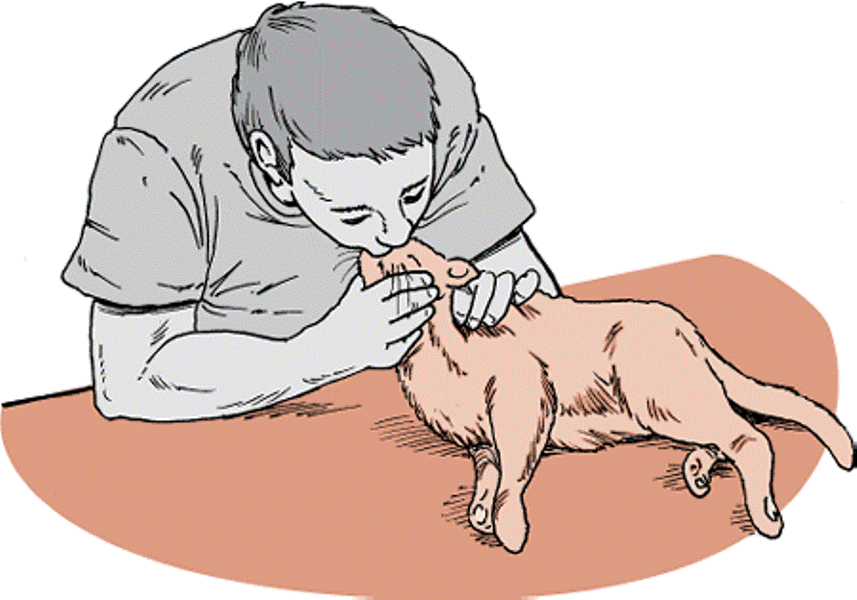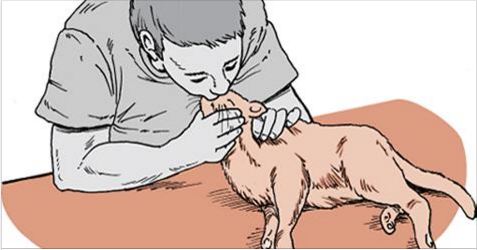Cardiopulmonary resuscitation (CPR) and artificial respiration (AR)are emergency procedures that might save your cat’s life. probably, you will not find yourself in a situation like that, but it is good to know how to react. The crucial thing is not to let it get to that point, so if you are noticing some signs like severe injury , unconsciousness , weakness and difficulty breathing, weakness immediately brought your cat to a vet as soon as possible, and if it is crucial and you administer it perfectly, CPR may give you enough time to get there.

Before you try anything, you have to check if your cat needs CPR.
Check the breathing – You can do this by you can putting your hand or a mirror close to the nose to feel his breath or checking for chest activity . If there are signs that the cat is breathing, then CPR is apparently not necessary.
Check the color of the gums – If your cat is not getting enough oxygen the gums can be grey or blue, and white gums can be a sign of improper blood circulation.
Check for a pulse – You can try to hear for a heartbeat by placing your ear (or stethoscope) on the left side of the chest, close to the elbow . You can check the pulse on the inside of the thigh, where the body meets the leg meets. In case of necessity follow these steps, and preferably on your way to the vets:
#1. First you have to check for breathing.
#2. If there is none, open the mouth and remove any blockage in the airway.
#3. Pull the tongue to the front of the mouth, after that close the mouth and slowly hold it shut.
#4. Make sure the neck is in straight position and breathe short puffs of air into the nose – one breath every 4 to 5 seconds.
#5. Look for chest activity; the chest should both rise when you give a breath and relax after the breath.

#6. If the cat’s heart stops, use both artificial respiration and CPR (steps 7-10)
#7. Check for a pulse and heartbeat.
#8. If there is none, lay your cat on his right side on a flat ground.
#9. Put your fingers and thumb from one hand on either side of his chest behind his elbows and give a fast squeeze to compress the chest to about half of its normal thickness.
#10. Compress the chest about 15 times every 10 seconds; give a breath about every 10 compressions.
Sadly, most cats that reach the point of needing CPR do not survive. If your cat does survive it will perhaps have to stay in a hospital for some time, and it will take a lot of after care till it gets better. Follow the instructions of the vets and if you don’t notice results or you see that the situation is getting worse contact him as soon as possible.
Accidents happen, but if you are careful and take your cat to regular check-ups maybe you can decrease the chances of your cat ever needing CPR.






